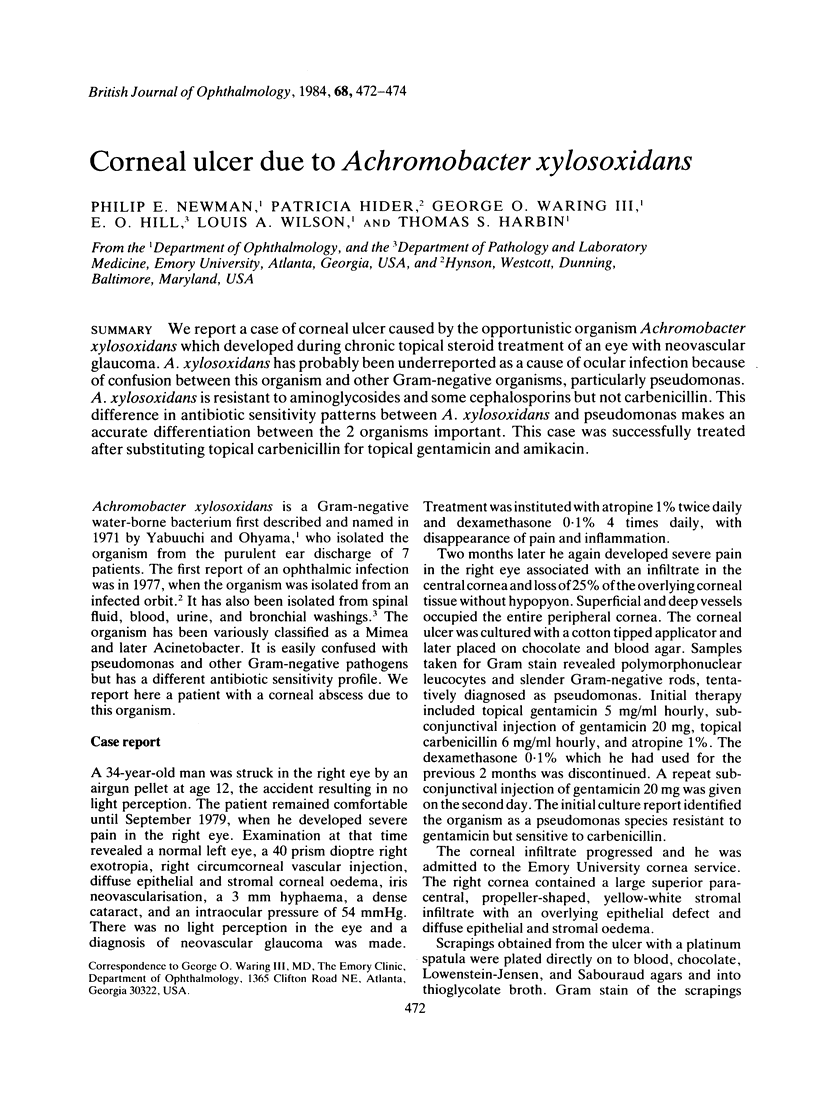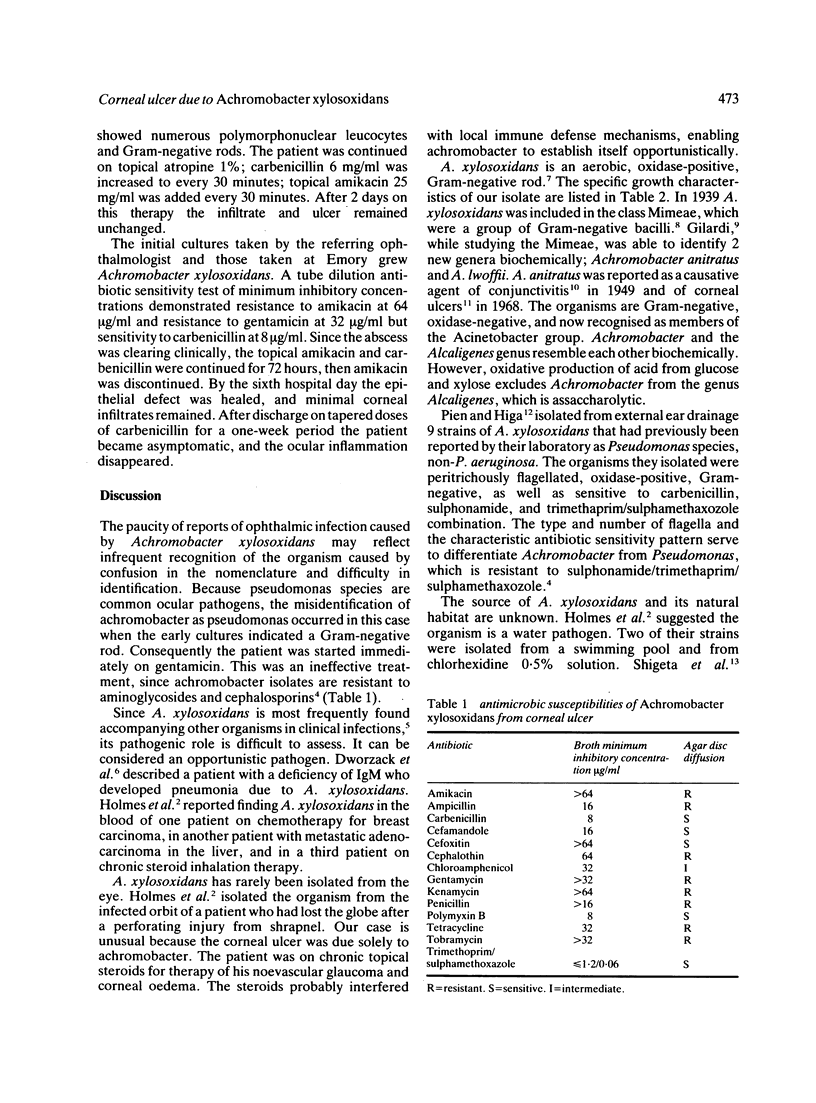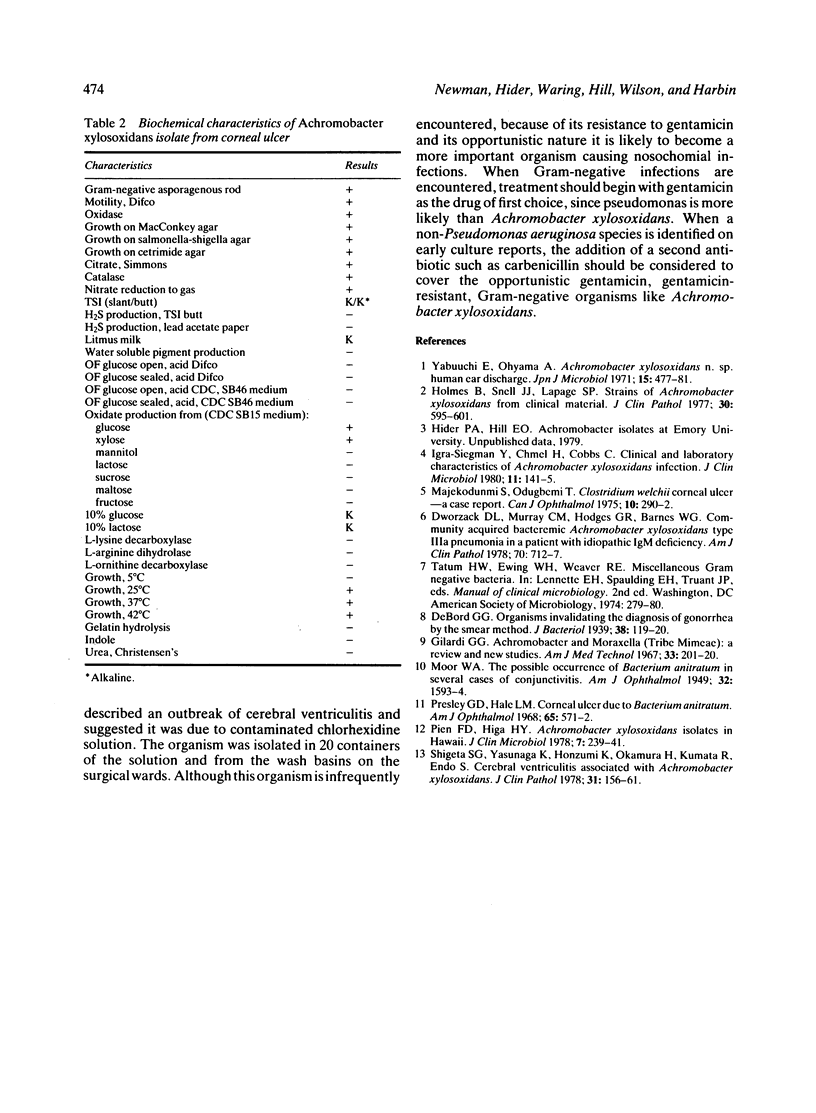Abstract
We report a case of corneal ulcer caused by the opportunistic organism Achromobacter xylosoxidans which developed during chronic topical steroid treatment of an eye with neovascular glaucoma. A. xylosoxidans has probably been underreported as a cause of ocular infection because of confusion between this organism and other Gram-negative organisms, particularly pseudomonas. A. xylosoxidans is resistant to aminoglycosides and some cephalosporins but not carbenicillin. This difference in antibiotic sensitivity patterns between A. xylosoxidans and pseudomonas makes an accurate differentiation between the 2 organisms important. This case was successfully treated after substituting topical carbenicillin for topical gentamicin and amikacin.
Full text
PDF


Selected References
These references are in PubMed. This may not be the complete list of references from this article.
- Dworzack D. L., Murray C. M., Hodges G. R., Barnes W. G. Community-acquired bacteremic Achromobacter xylosoxidans type IIIa pneumonia in a patient with idiopathic IgM deficiency. Am J Clin Pathol. 1978 Oct;70(4):712–717. doi: 10.1093/ajcp/70.4.712. [DOI] [PubMed] [Google Scholar]
- Gilardi G. L. Achromobacter and Moraxella (tribe Mimeae): a review and new studies. Am J Med Technol. 1967 May-Jun;33(3):201–220. [PubMed] [Google Scholar]
- Holmes B., Snell J. J., Lapage S. P. Strains of Achromobacter xylosoxidans from clinical material. J Clin Pathol. 1977 Jul;30(7):595–601. doi: 10.1136/jcp.30.7.595. [DOI] [PMC free article] [PubMed] [Google Scholar]
- Igra-Siegman Y., Chmel H., Cobbs C. Clinical and laboratory characteristics of Achromobacter xylosoxidans infection. J Clin Microbiol. 1980 Feb;11(2):141–145. doi: 10.1128/jcm.11.2.141-145.1980. [DOI] [PMC free article] [PubMed] [Google Scholar]
- MOOR W. A. The possible occurrence of Bacterium anitratum in several cases of conjunctivitis. Am J Ophthalmol. 1949 Nov;32(11):1593–1593. doi: 10.1016/s0002-9394(49)90387-6. [DOI] [PubMed] [Google Scholar]
- Majekodunmi S., Odugbemi T. Clostridium welchii corneal ulcer--a case report. Can J Ophthalmol. 1975 Apr;10(2):290–292. [PubMed] [Google Scholar]
- Pien F. D., Higa H. Y. Achromobacter xylosoxidans isolates in Hawaii. J Clin Microbiol. 1978 Feb;7(2):239–241. doi: 10.1128/jcm.7.2.239-241.1978. [DOI] [PMC free article] [PubMed] [Google Scholar]
- Presley G. D., Hale L. M. Corneal ulcer due to Bacterium anitratum. Am J Ophthalmol. 1968 Apr;65(4):571–572. doi: 10.1016/0002-9394(68)93876-2. [DOI] [PubMed] [Google Scholar]
- Shigeta S., Yasunaga Y., Honzumi K., Okamura H., Kumata R., Endo S. Cerebral ventriculitis associated with Achromobacter xylosoxidans. J Clin Pathol. 1978 Feb;31(2):156–161. doi: 10.1136/jcp.31.2.156. [DOI] [PMC free article] [PubMed] [Google Scholar]
- Yabuuchi E., Oyama A. Achromobacter xylosoxidans n. sp. from human ear discharge. Jpn J Microbiol. 1971 Sep;15(5):477–481. doi: 10.1111/j.1348-0421.1971.tb00607.x. [DOI] [PubMed] [Google Scholar]


